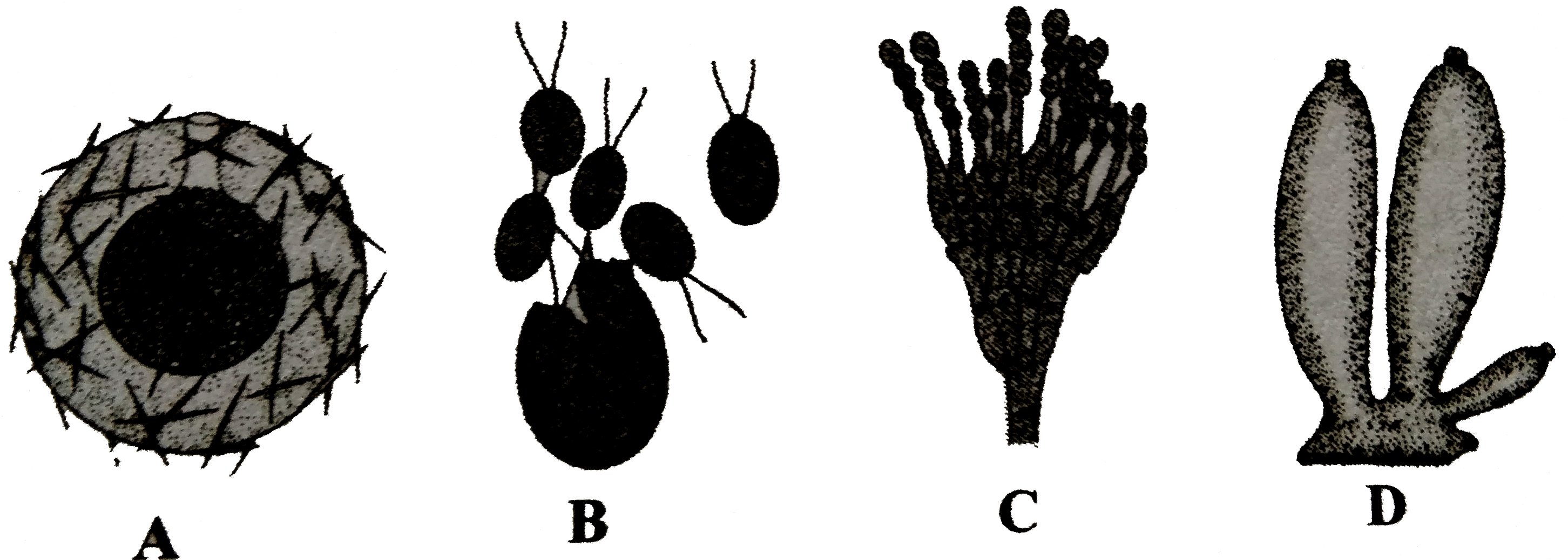Asexual reproduction through formation of gemmule occurs in
Ascidia
Hydra
Planaria
Spongilla.
The correct Answer is:D
To answer the question "Asexual reproduction through formation of gemmule occurs in:", we can follow these steps:
1. Understanding Gemmules: Gemmules are a form of asexual reproduction. They are internal buds that can develop into new organisms. This process is primarily observed in certain types of sponges.
2. Identifying the Organisms: The options provided are:
- A. Ascidia
- B. Hydra
- C. Planaria
- D. Spondyla
3. Analyzing Each Option:
- Ascidia: This organism is a type of tunicate and reproduces sexually, not through gemmules.
- Hydra: Hydra reproduces asexually through budding but does not form gemmules.
- Planaria: Planaria can reproduce asexually through regeneration but does not form gemmules.
- Spondyla: This is a freshwater sponge known for reproducing asexually through the formation of gemmules.
4. Conclusion: Based on the analysis, the organism that reproduces asexually through the formation of gemmules is Spondyla.
5. Final Answer: The correct answer is D. Spondyla.
- A. Ascidia
- B. Hydra
- C. Planaria
- D. Spondyla
- Ascidia: This organism is a type of tunicate and reproduces sexually, not through gemmules.
- Hydra: Hydra reproduces asexually through budding but does not form gemmules.
- Planaria: Planaria can reproduce asexually through regeneration but does not form gemmules.
- Spondyla: This is a freshwater sponge known for reproducing asexually through the formation of gemmules.
Topper's Solved these Questions
- REPRODUCTION IN ORGANISMSBOOK - DINESH PUBLICATION ENGLISHCHAPTER - REPRODUCTION IN ORGANISMSEXERCISE - Check Your Grasp
19 Videos
- PRINCIPLES AND APPLICATIONS OF BIOTECHNOLOGYBOOK - DINESH PUBLICATION ENGLISHCHAPTER - PRINCIPLES AND APPLICATIONS OF BIOTECHNOLOGYEXERCISE - Brain Teasers
5 Videos
- REPRODUCTIVE HEALTHBOOK - DINESH PUBLICATION ENGLISHCHAPTER - REPRODUCTIVE HEALTHEXERCISE - check your grasp
10 Videos
Similar Questions
Knowledge Check
Study the following figures and select the correct statements regarding these.

(i)A shows mode of asexual reproduction in sponges through internal buds.
(ii)B shows sexual reprodction through zoospores in Chlamydomonas.
(iii) C shows asexual reproduction through fragmentation in Penicullium.
(iv) D shows external budding in Sycon.A(i) and (ii)BSmaller organisms always have shorter life span and vice versa.C(ii), (iii), and (iv)D(i) and (iv)
Asexual reproduction is common in
View SolutionAsexual reproduction involves:
View SolutionAsexual reproduction is related to
View SolutionAsexual reproduction is related to
View SolutionAsexual reproduction is absent in
View SolutionAsexual reproduction occurs in Hydra during
View Solution$ Agamospermy is the process of Asexual reproduction.
! Asexual reproduction occurs only in Algae.
View Solution
